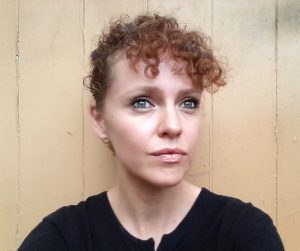
Dr. Carmen Nolte-Odhiambo, Assistant Professor of English at the University of Hawaiʻi–West Oʻahu, published an article about children and pets earlier this month in Parallax, an international peer-reviewed journal of philosophy and cultural studies, in a special issue on “Animal Borderlands.”
Nolte-Odhiambo’s article is titled, “From Aetotemporal Becomings to Petophilic Hospitality: Liminal Pet and Child Figures.”
Nolte-Odhiambo said the special issue on “Animal Borderlands” brings together six essays that explore current questions in animal studies – such as the binary distinction between “the human” and “the animal” – in an effort to move closer toward what the issue’s editor Dominic O’Key calls “the multispecies relations that are necessary for the future liberation of life on this planet.”

Dr. Carmen Nolte-Odhiambo
“My article participates in this discussion by focusing on ‘the child’ and ‘the pet’ which, I argue, both exist on the human/animal border and can point us toward new, potentially liberating ways of being and relating,” she said.
Her article examines the overlaps and differences between our treatment of children and pets: whereas children are typically understood as nascent humans who share with animals a certain wildness and playfulness, pets are domesticated animals who live in our homes as childlike creatures, Nolte-Odhiambo explained.
“Rethinking our relations with children and pets can, I suggest, destabilize human/animal hierarchies and the problematic power structures on which they rest,” she said.
Nolte-Odhiambo is the author of multiple articles and book chapters, as well as the co-editor of “Childhood and Pethood in Literature and Culture: New Perspectives in Childhood Studies and Animal Studies” (Routledge, 2017). She is currently at work on a monograph titled, “The Child’s Time: Anthropogenesis, Asexuality, and Aetotemporality,” which critically examines the figure of the child across a range of literary and artistic representations.
More information about Nolte-Odhiambo’s article in Parallax is available at this link. A pre-publication version of the article is available in the James & Abigail Campbell Library’s DSpace repository.
